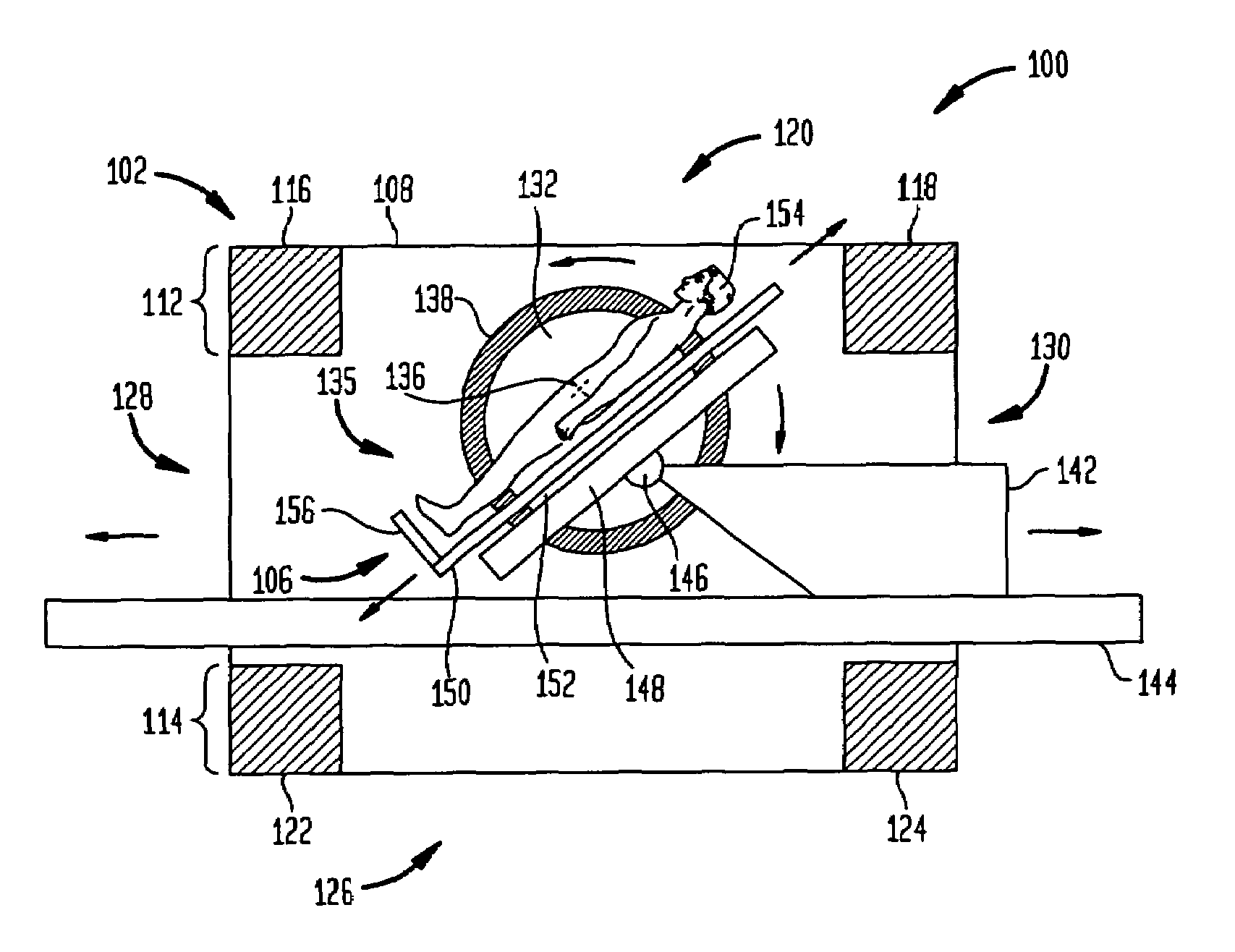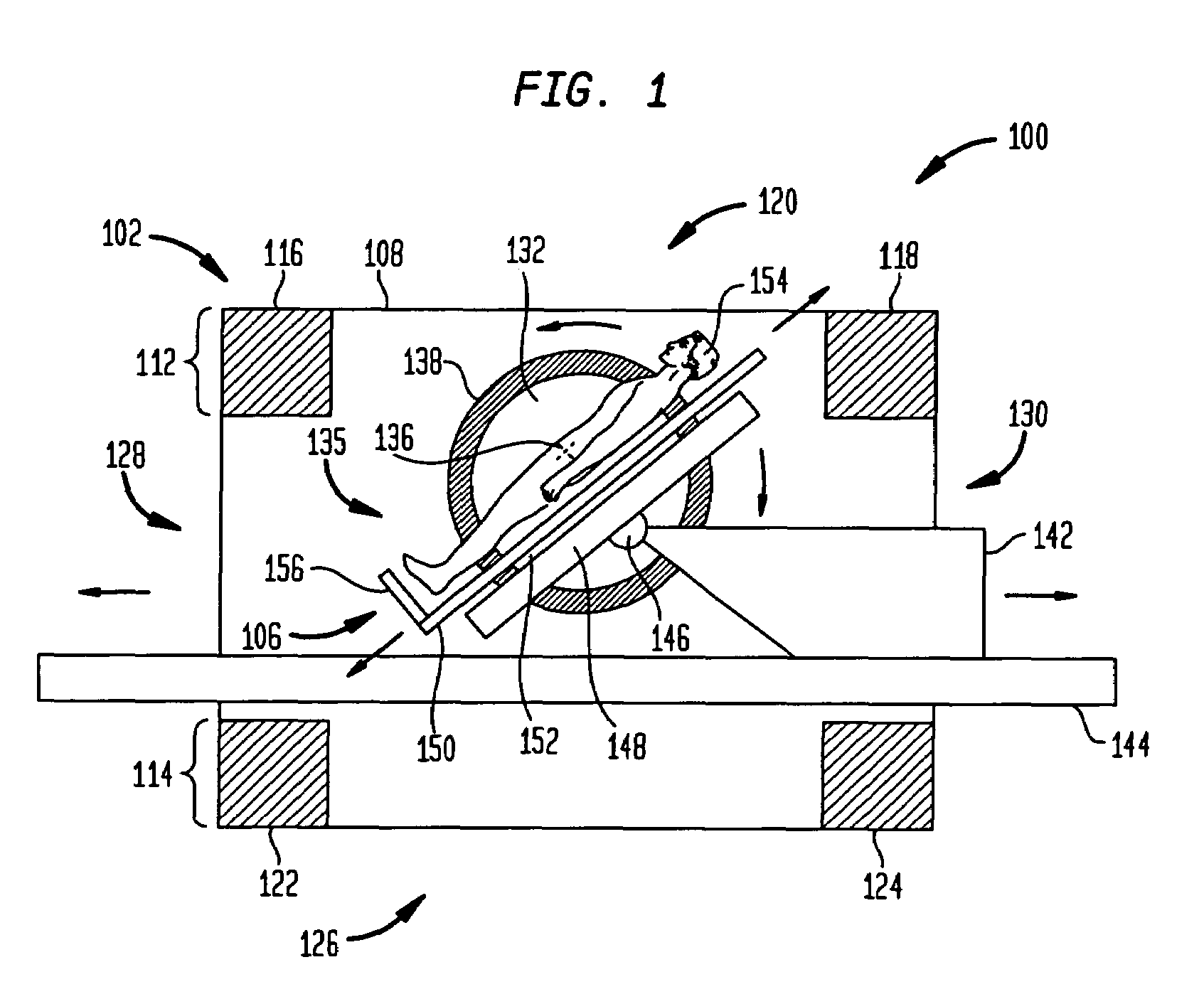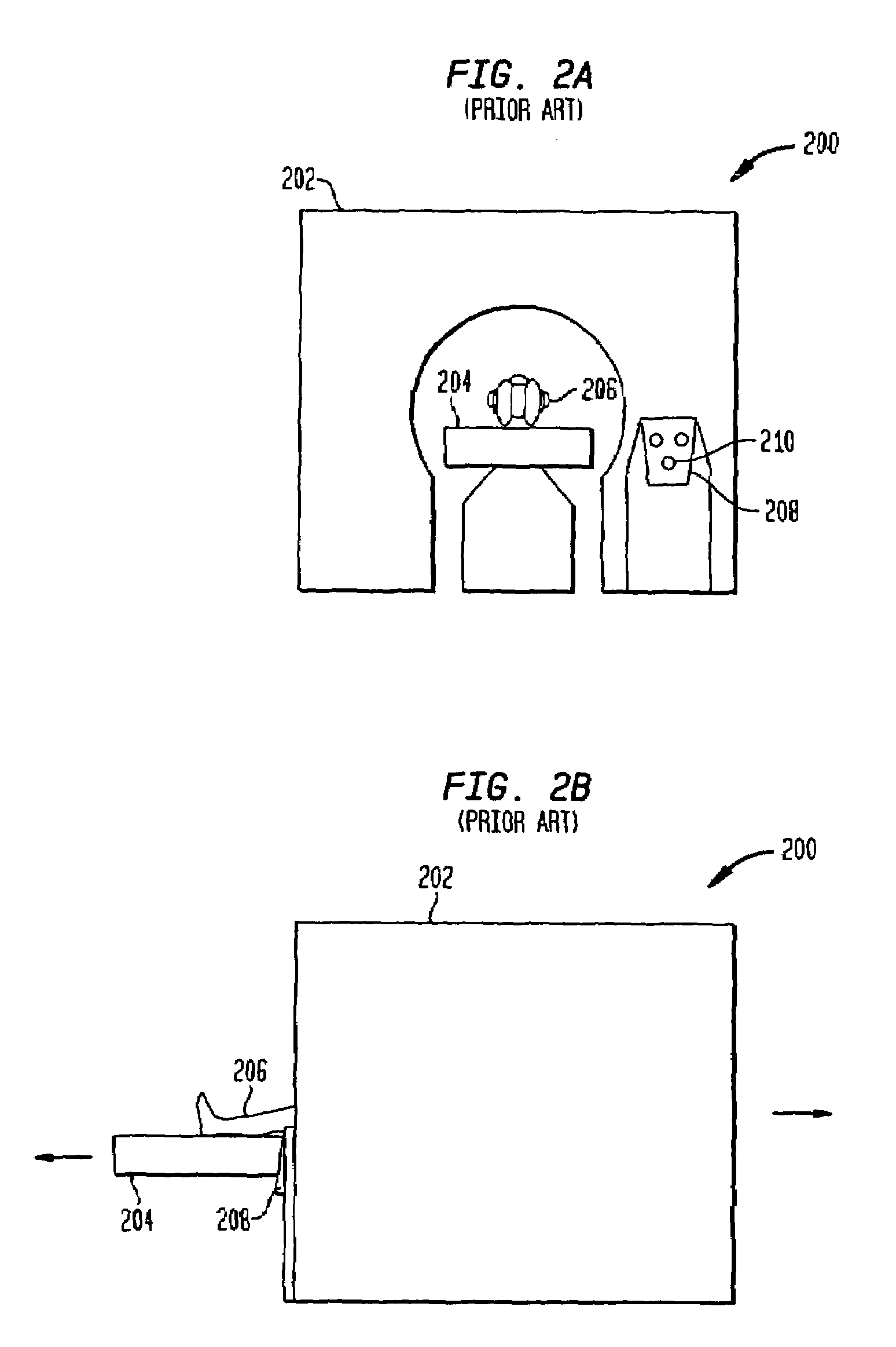Method for lateral motion magnetic resonance imaging
a magnetic resonance imaging and lateral motion technology, applied in the field of magnetic resonance imaging apparatus and procedures, can solve the problems of imposing significant physical constraints on the positioning of patients, unable to achieve the advantages of the patient handling system as discussed in the aforementioned applications, and unable to achieve the advantages of the patient handling system, so as to achieve the effect of faster and more accurate diagnosis of painful injuries and faster image acquisition
- Summary
- Abstract
- Description
- Claims
- Application Information
AI Technical Summary
Benefits of technology
Problems solved by technology
Method used
Image
Examples
Embodiment Construction
[0029]Among the various positions a patient can assume during a scan are standing while facing out of the magnet, as shown in FIG. 3, as well as standing while rotated 90 degrees from this position, thus facing one of the magnet poles, as shown in FIG. 4. This latter position is particularly advantageous for studies of the spine, including the cervical, lumbar, and thoracic spine.
[0030]FIG. 5 is a sectional view taken along line 9-9 in FIG. 4. To illustrate how this may be used, consider the following study of the lumbar spine. A patient can be positioned standing in the magnet facing one of the poles of the magnet. In this position, the patient may engage in lateral or side-to-side motion generally pivoting about the hip region of the body, as shown in FIG. 5. Images may then be taken at a series of sequential body positions along the path of this lateral motion. Here, a preferred scan orientation is coronal.
[0031]Once this series of scans is complete, they may be diagnosed or anal...
PUM
 Login to View More
Login to View More Abstract
Description
Claims
Application Information
 Login to View More
Login to View More - R&D
- Intellectual Property
- Life Sciences
- Materials
- Tech Scout
- Unparalleled Data Quality
- Higher Quality Content
- 60% Fewer Hallucinations
Browse by: Latest US Patents, China's latest patents, Technical Efficacy Thesaurus, Application Domain, Technology Topic, Popular Technical Reports.
© 2025 PatSnap. All rights reserved.Legal|Privacy policy|Modern Slavery Act Transparency Statement|Sitemap|About US| Contact US: help@patsnap.com



